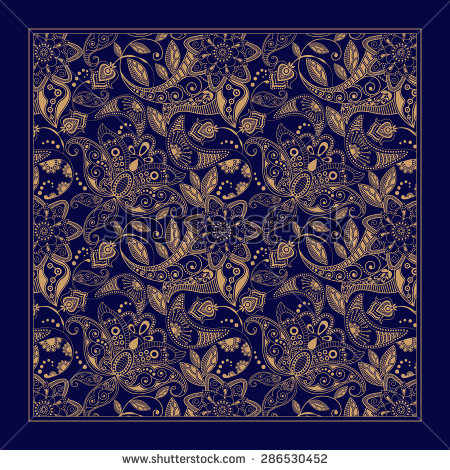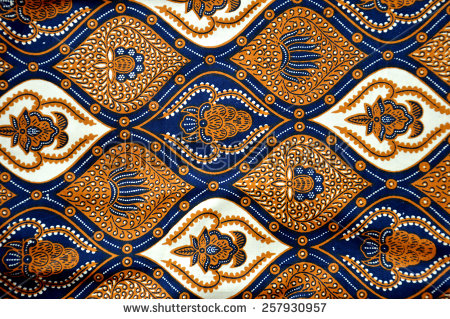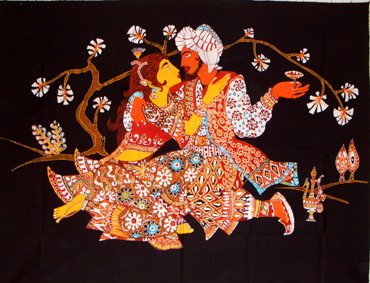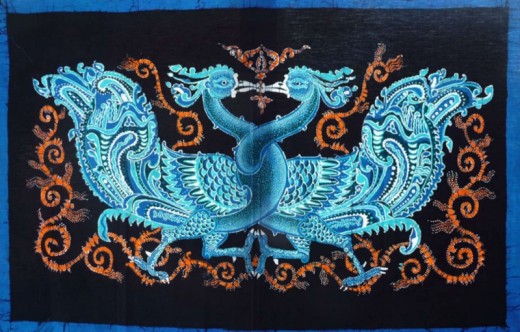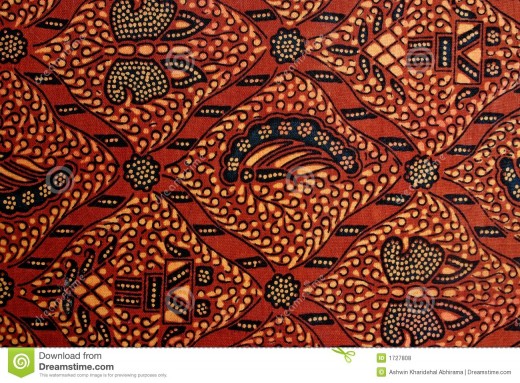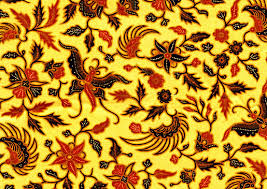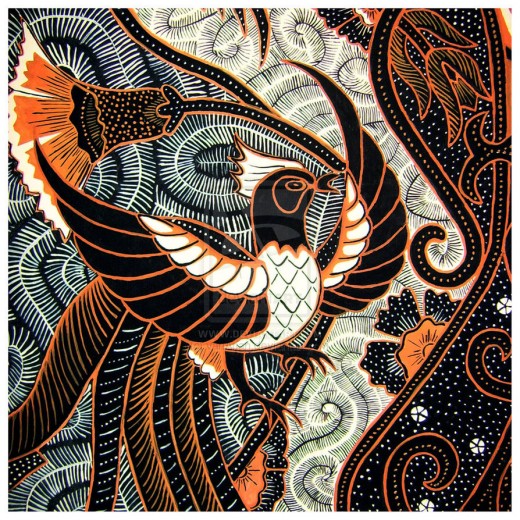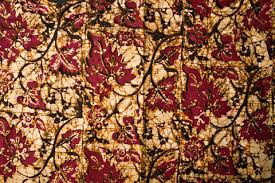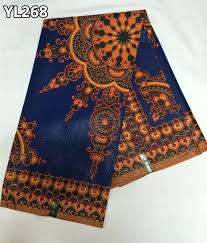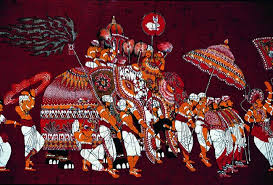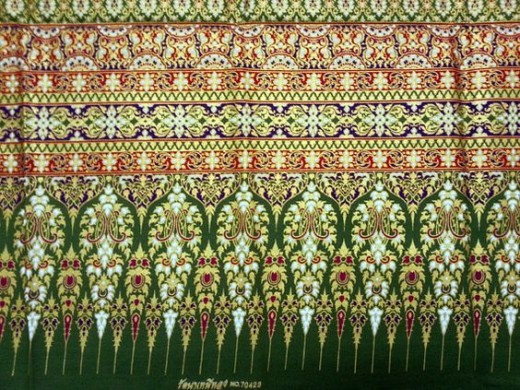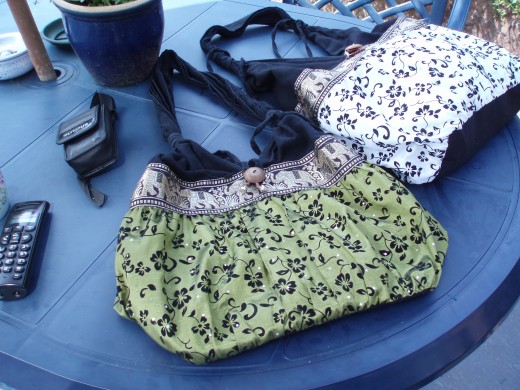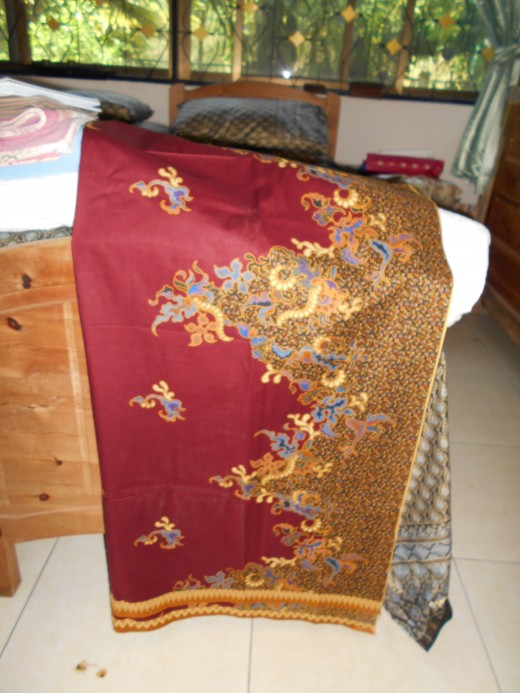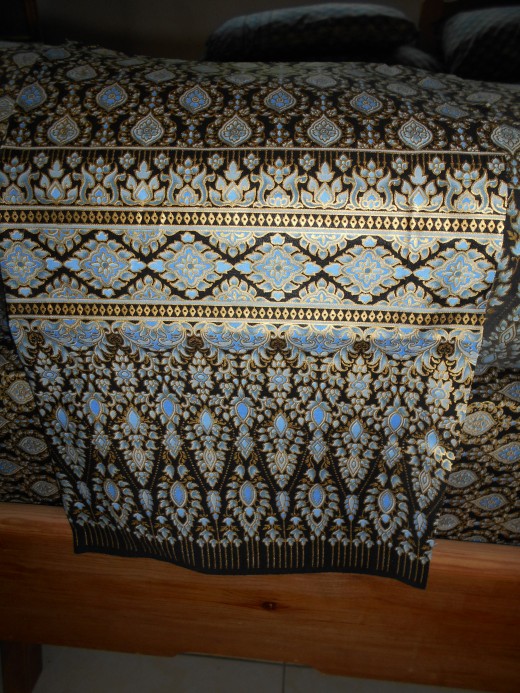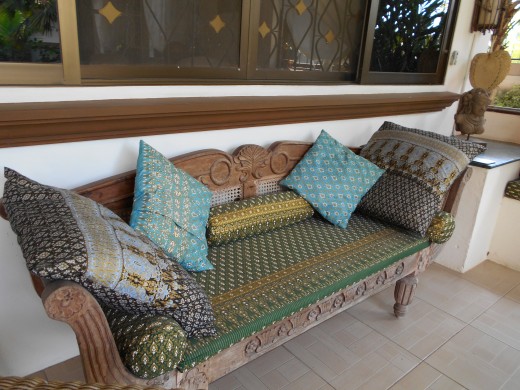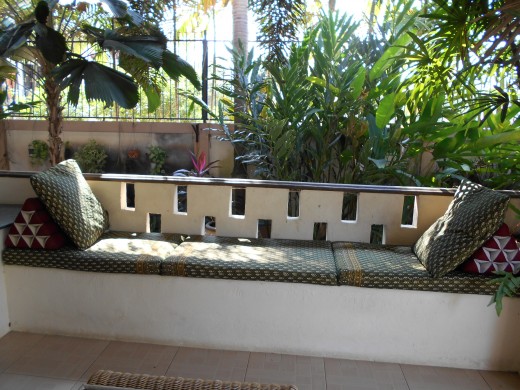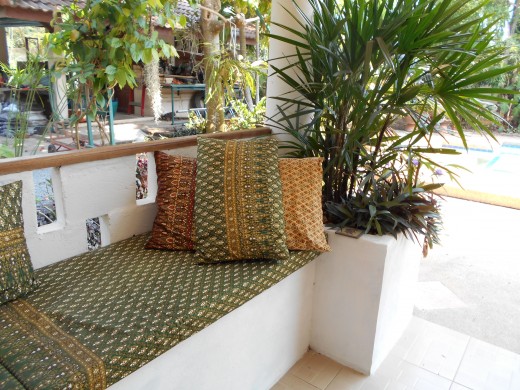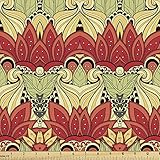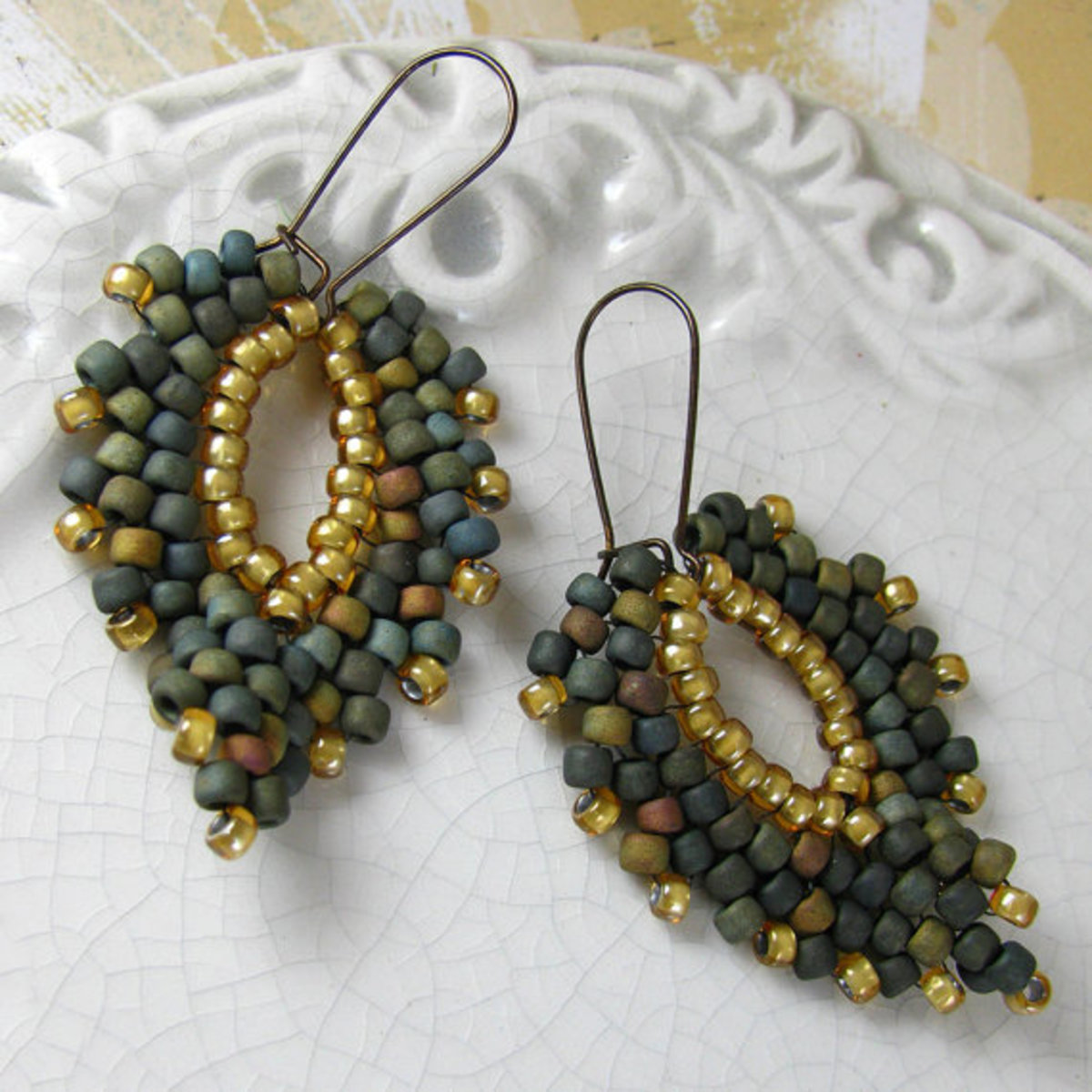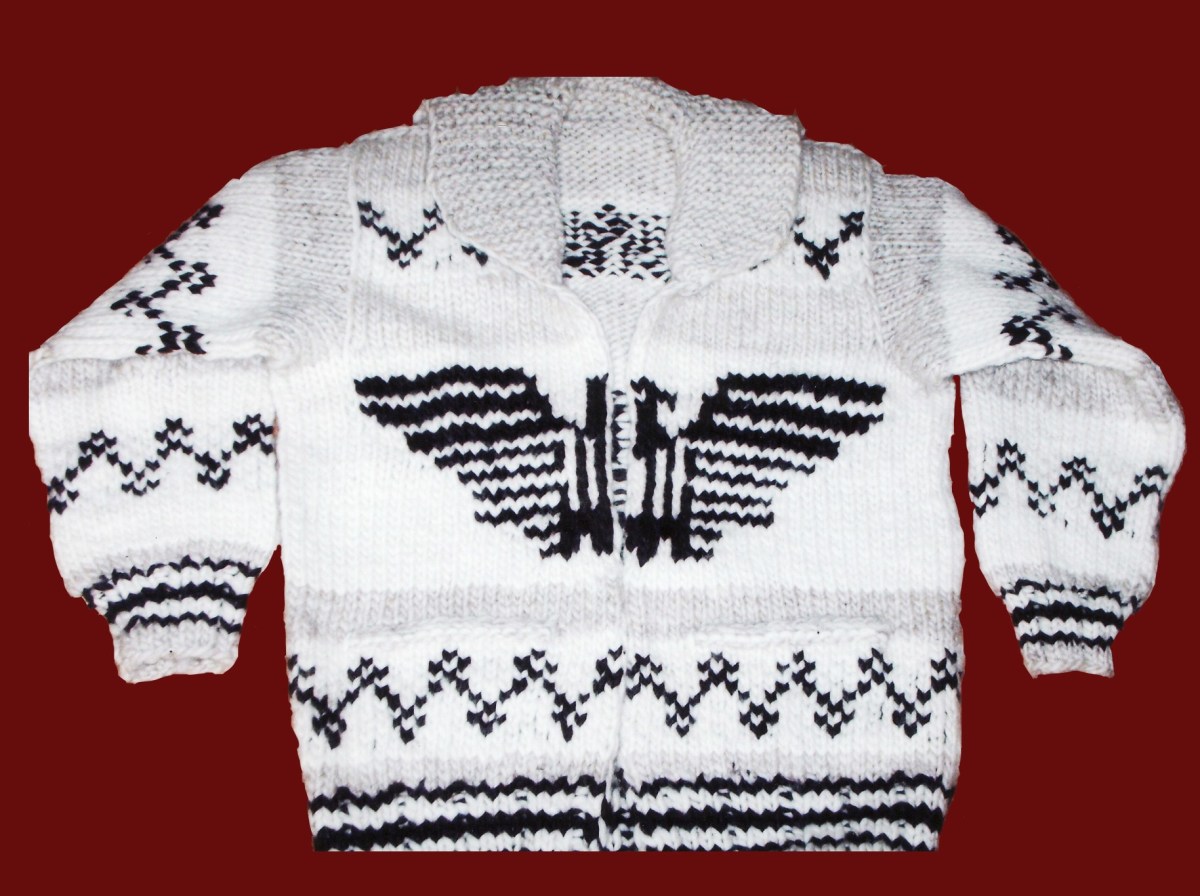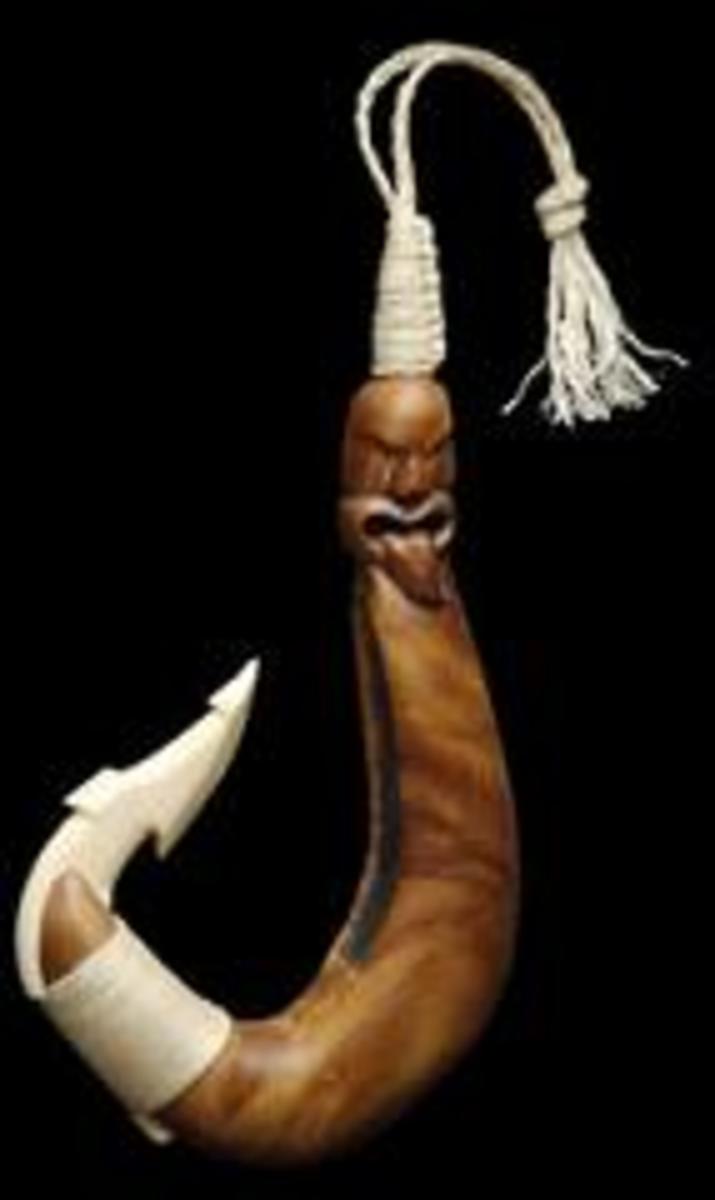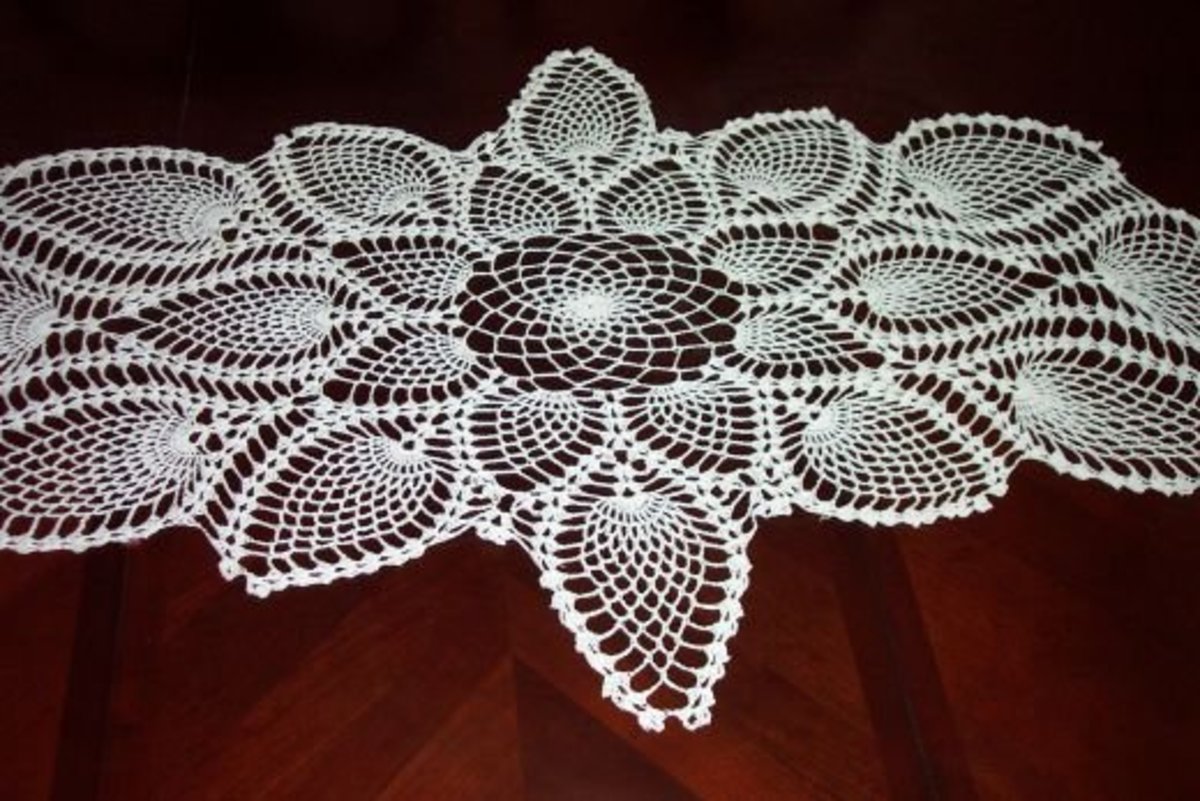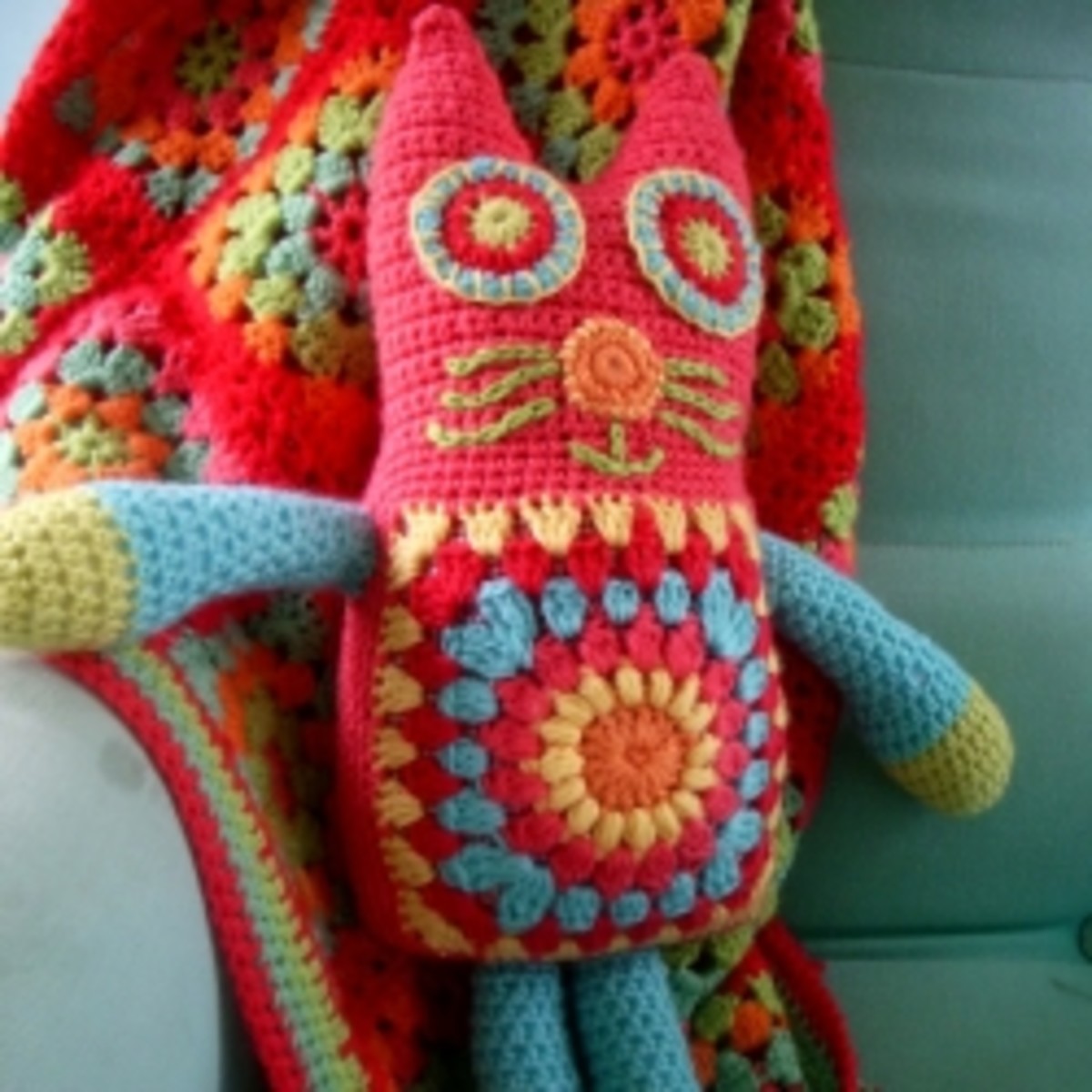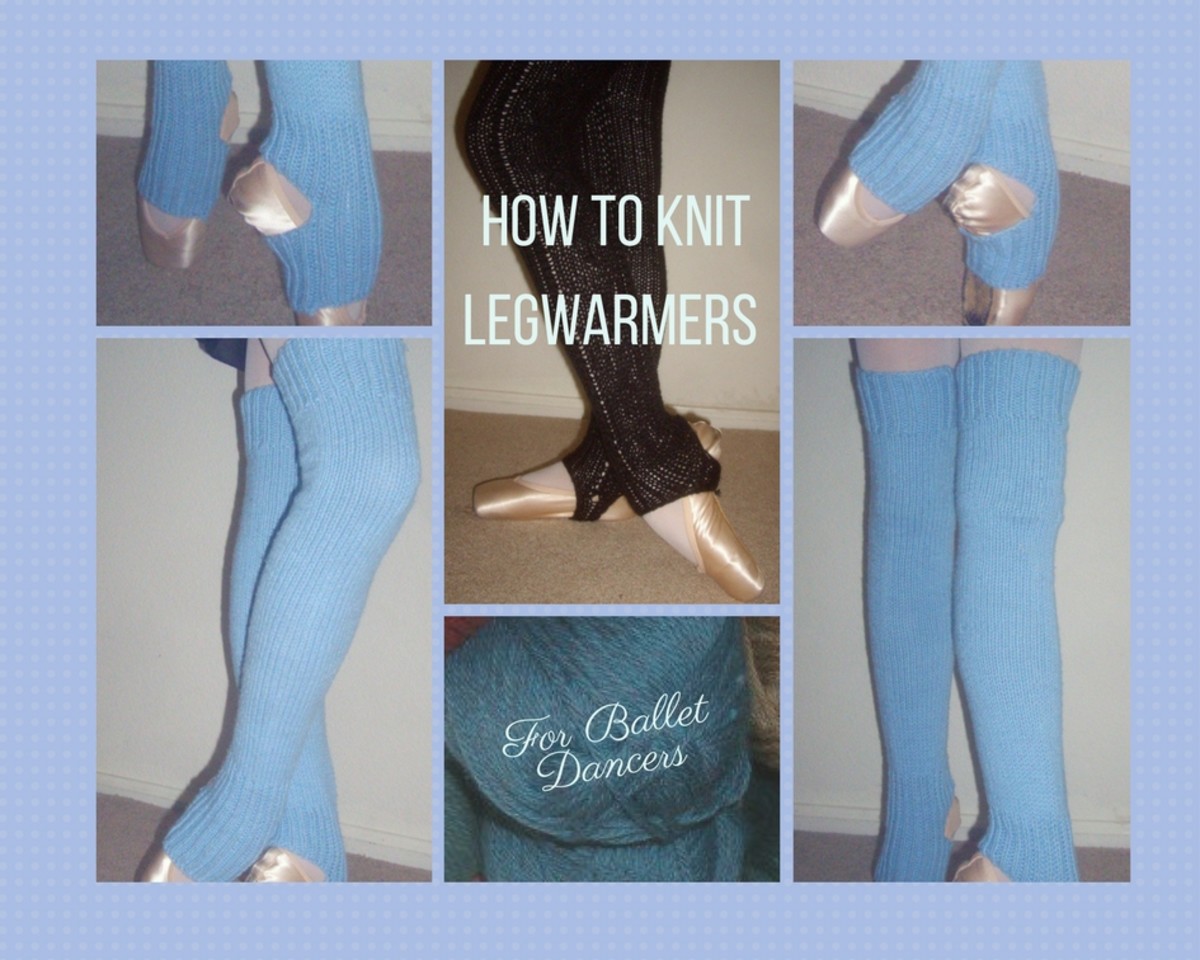- HubPages»
- Arts and Design»
- Crafts & Handiwork»
- Textiles»
- Textile Dyeing
Beautiful Batik Textiles.
Beautiful Batiks
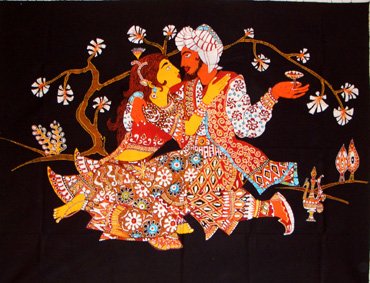
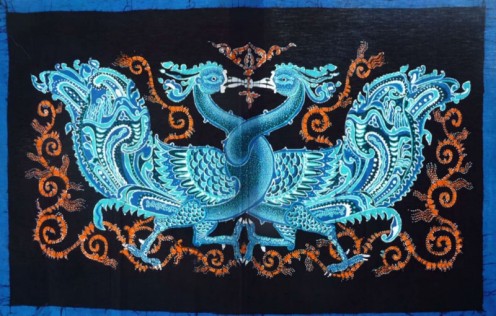
Exquisite Textiles
In the beginning.......... My love affair with exotic textiles began long, long ago, maybe before I was born; maybe as a genetic memory passed down to me from my dear Grandfather, Thomas Pratten, for he had spent many years with the British army in India at the end of the 19th and beginning of the 20th century. Consequently he must have been very familiar with the fabulous patterns of the Indian sari. He would have been hard pressed not see them; they were, as they are today, everywhere on the sub-continent. No matter how rich or how poor the woman, she will be wearing this fabulous symbol of her race. The sheer diversity of patterns is immense and it is difficult to find any two saris with the same decoration. The colours are stunning and seem irreproducible in the Western world. They have a seductive elegance to them that no other item of clothing can create.
But sadly, I never had the courage to wear a sari in public, though I do own many. I’m a very pale skinned English woman and no matter how I try, I cannot be even remotely like the incredibly graceful women of India. Parties and special functions were fine, and my attire much admired but that’s as far as it ever went.
Batiks of different Asian Countries
Click thumbnail to view full-size









The Arrival of Batiks
The Arrival of Batik Material in Indonesia.
Instead of saris, I found a substitute material that came to Southeast Asia from the very looms of India many centuries ago when the Indians were conquering their neighbours and laying claim to various lands. This was the extraordinary batik materials that are produced in Indonesia even to this day. Javanese traditional batik, especially from Yogyakarta, has special meaning which is rooted in the Javanese concept of the universe. There are many regional differences across Indonesia, each producing area having their own unique patterns. Name an area to a batik expert and he will describe to you the traditional patterns from there. Designs include abstract, mythological patterns, flowers, animals and even people. The variations are endless and it is my dream to one day visits some of these amazing places to see just how the work is carried out.
The traditional colours include indigo, dark brown and white. These represented the three major Hindu Gods, Brahma, Vishnu and Shiva. Certain patterns and the rare colour yellow were the preserve of the Royal family and never worn by ordinary people. That obviously has changed today, but even now, it is difficult to find much batik in yellow.
Batik has been both an art and a craft form for many centuries. In Java, Indonesia, batik is part of an ancient tradition, and some of the finest cloth in the world is still manufactured there.
Home decor in Batik
Click thumbnail to view full-size






Methods of Making Batiks
Modern Contemporary Batiks
Modern contemporary batik, whilst owing much to the past, is markedly different from the more traditional and formal styles of the past. The method of production is itself different, with the traditional batiks continuing to be hand produced by the wax, dye and dip method, where the modern batik is often mass produced and uses many different materials from the traditional cottons and the palette of colours is infinite - wonderful, magical colours!
Contemporary batiks are made from silk, cotton, wool, polyesters, leather, paper or even wood and ceramics. The artist today may use a variety of methods including etching, discharge dyeing, stencils, and different tools for waxing and dyeing, with wax recipes containing chemicals with different resistance values.
These delightful materials, although continuing to be worn simply as sarongs by many of the older generations in South East Asia, can be turned into anything you desire by yourself or a good seamstress and can be found in the numerous markets and stores across the continent. My favourite use is for soft furnishings, but it can be overdone..............! (too 'busy' with so many patterns and colours). Our ideas at the moment are to make wall hangings, and these have been a huge success and much admired. Indonesia is obviously the best place. Here you can buy the materials in large bails providing you want a variety of patterns and colours. But do not think that in one bail you will ever find a pattern the same, I think it’s impossible. However, each piece of batik is labelled and identifiable with the makers name and batch number so when I make that trip to Java, on the top of my list is finding specific batch numbers to see if in fact they are all different or if it's just me not knowing what to look out for. But until I do, I must continue to ask, - how do they do it? How can they produce so many variations in colour and designs and not once repeat them??
It's such an inspiration to work with batiks, there really is so much you can do with them! Go on, try it for yourselves and see what happens!
The Wax and Dye Method: Batik Tulis.
Fine cotton is used for the best traditional batiks and is expensive to buy. The method sees the cloth stretched so that each section is taut. The designer then applies a pattern to each area to be worked. This is often carried out on 2 or 3 metre lengths, maybe more, depending on the customers order. Traditional batik is most often made to special order today. The next worker then applies a series of dots around the design. Each colour to be used is blocked out with the melted wax then dipped in the dye vat. It is boiled, rinsed and dried after each colour application until it takes on its final pattern colours. It’s an incredibly lengthy and time consuming method with the consequent high price tag, but the final results are exquisite. The waxes used are a mix of beeswax and paraffin wax. The beeswax will hold to the fabric and the paraffin wax will allow cracking, which is the characteristic of batik. After the last dyeing process and drying, the material is dipped in a solvent to dissolve the wax, or ironed between paper sheets to absorb the wax and reveal the deep rich colours. This traditional method of making batik is called ‘batik tulis’, literally, ‘written batik’.
Copper Block or Cap
The invention of the copper block or cap was developed by the Javanese in the 20th century, thus revolutionizing batik production completely and making it affordable for all. By block printing the wax onto the fabric, it became possible to make high quality designs and intricate patterns much faster than one could possibly do by hand printing. This method of using copper blocks to apply melted wax patterns is called ‘batik cap’.
Indonesian batik used for clothing normally has an intricate pattern. Traditionally, wider curves were reserved for the batik produced for the aristocracy. The traditional cloth has natural colours (tones of indigo, brown and white), while contemporary pieces have more variety and often vivid colours.
Javanese batik typically includes symbols. Some decorative pieces may be mystically influenced and this type is rarely used for clothing. Some may carry designs of birds, animals or other intricate designs.
The history of this wonderful fabric artwork is intriguing, and the designs are truly magical. It’s a wonder then that it isn’t used more often in the west, especially for soft furnishings and curtaining.
Here, I'm leaving you with a delicious assortment of ancient and modern designs.

